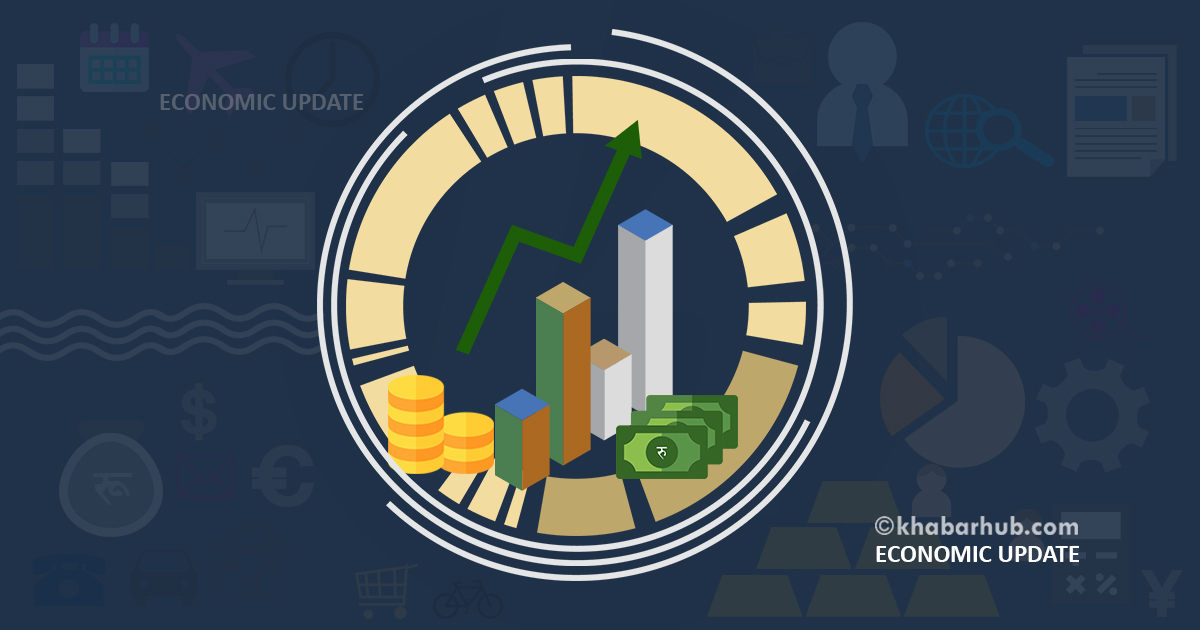KATHMANDU: Economic Digest offers a concise yet comprehensive overview of significant business happenings in Nepal, presented in easily digestible summaries.
The Nepal Stock Exchange (NEPSE) experienced a decline of 90 points last week, continuing a bearish trend that has lasted over a month.
The market opened at 2,576.76 points and closed at 2,486.76 points, with fluctuations ranging from a high of 2,643.51 points to a low of 2,443.28 points, resulting in a volatility of 200.23 points.
The week began positively but saw sharp declines on Monday and Tuesday, with a brief recovery on Wednesday followed by another drop on Thursday. Investors faced a total loss of Rs 143.10 billion.
In currency exchange, rates for foreign currencies, including the US dollar and Euro, remained unchanged from the previous Saturday, with the buying rate for one US dollar at Rs 133.63.
Additionally, Nepal’s smartphone imports surged to nearly Rs 7 billion in the first two months of the fiscal year, reflecting a growing demand for mobile technology.
However, the country remains heavily reliant on imported petroleum products, which could pose economic vulnerabilities due to global price fluctuations. Vehicle imports also rose, indicating increased demand for personal transportation.
On the export side, Nepal continues to depend on traditional goods like carpets and tea, highlighting the need for diversification to enhance economic resilience.
NEPSE drops 90 points, investors face Rs 143.10 billion loss
The Nepal Stock Exchange (NEPSE) last week dropped by 90 points, continuing a bearish trend that has persisted for over a month.
During this period, the secondary market opened at 2,576.76 points on Sunday and closed at 2,486.76 points on Thursday.
The index fluctuated between a high of 2,643.51 points and a low of 2,443.28 points, experiencing a volatility of 200.23 points.
The week began on a positive note with an increase of 11.58 points on Sunday.
However, the index fell sharply by 59.02 points on Monday and 58.93 points on Tuesday.
A brief recovery occurred on Wednesday, with a gain of 49.18 points, but this was followed by another drop of 32.81 points on Thursday.
Values of all foreign currencies remain unchanged
The values of all foreign currencies, including the US dollar, Australian dollar, pound, and dinar, remain unchanged from Saturday’s rates, according to Nepal Rasntra Bank.
According to the exchange rate published by Nepal Rastra Bank, the buying rate for one US dollar is 133 rupees 63 paisa, while the selling rate is 134 rupees 23 paisa—unchanged from Saturday.
For the Euro, the buying rate remains at 149 rupees 14 paisa, with a selling rate of 149 rupees 81 paisa.
The buying rate for one pound sterling is 178 rupees 94 paisa, and the selling rate is 179 rupees 74 paisa.
For the Australian dollar, the buying rate is 92 rupees 05 paisa, and the selling rate is 92 rupees 46 paisa.
Additionally, the buying rate for one Kuwaiti dinar is maintained at 438 rupees 02 paisa, with a selling rate of 439 rupees 98 paisa.
Likewise, the buying rate for one Bahraini dinar is 354 rupees 48 paisa, and the selling rate is 356 rupees 07 paisa.
Nepal’s smartphone imports reach nearly Rs 7 billion in two months
Nepal’s smartphone imports have surged significantly, totaling nearly Rs 7 billion in the first two months of the current fiscal year, with 454,958 units entering the market.
This demand underscores the increasing importance of smartphones in everyday life, reflecting changing consumer behavior and a growing digital landscape.
However, smartphones represent just one aspect of Nepal’s broader import scenario. Petroleum products dominate, with petrol imports valued at Rs 11.65 billion and diesel at Rs 13.64 billion.
This heavy reliance on imported energy highlights potential vulnerabilities, especially with the volatility of global oil prices. Additionally, LP gas imports at Rs 9.42 billion further emphasize the critical need for energy resources in the country.
Vehicle imports are also noteworthy, with significant rises seen in motorcycles (valued at Rs 2.94 billion) and electric vehicles (Rs 2.43 billion). This trend suggests a growing middle class and urbanization, leading to increased demand for personal transportation.
On the export side, Nepal primarily relies on traditional goods such as carpets, tea, jute, and yarn.
While these products have historically been strong, dependence on a limited range of exports can pose risks if global market demands shift. Diversification in both import and export strategies could bolster economic resilience and growth.
(Prepared by Srija Khanal)









Comment